How to Identify and Attract a Carolina Wren
Updated: May 19, 2022
The Carolina wren song is common in southeastern woods, where it is heard even in winter. Learn about their nests and favorite foods.
What Does a Carolina Wren Look Like?
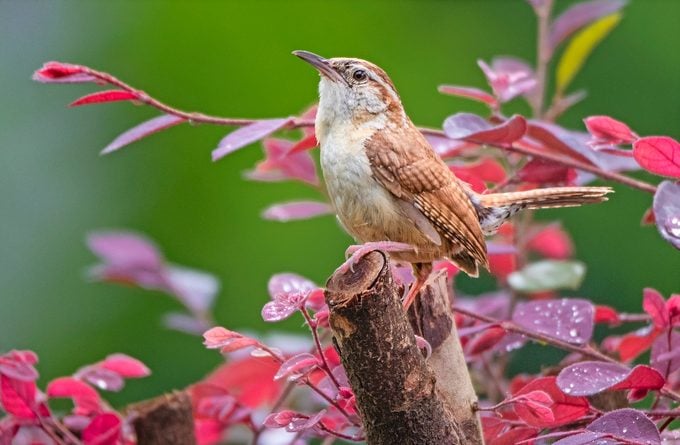
Carolina wrens have slightly more reddish plumage than house wrens. They are year-round residents throughout the eastern states. These stocky birds have a white eye stripe, bright rusty-brown plumage and beige below. They measure about 5 3/4 inches long with a wingspan of 7 1/2 inches.
Scientific Name: Thryothorus ludovicianus
Family: Wren
Learn how to attract and identify a house wren and a Bewick’s wren, and discover how to attract wrens to your yard.
Carolina Wren Nest and Eggs
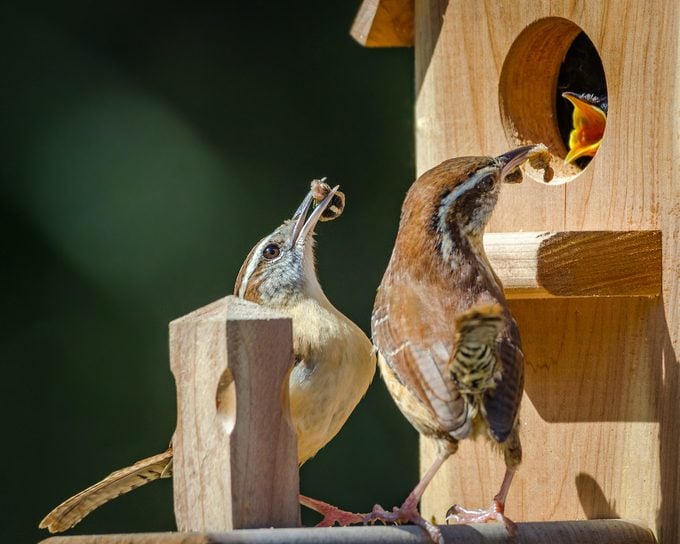
Pairs of Carolina wrens stay together, defending their nest and territory throughout the year. This species is not picky about nest sites and may build their bulky nests in tree cavities, woodpiles, birdhouses, flower pots and more. The female lays three to seven white eggs with significant reddish spotting.
Learn how to attract nesting Carolina and house wrens. Plus, learn the difference between a house wren and a Carolina wren.
What Do Carolina Wrens Eat?
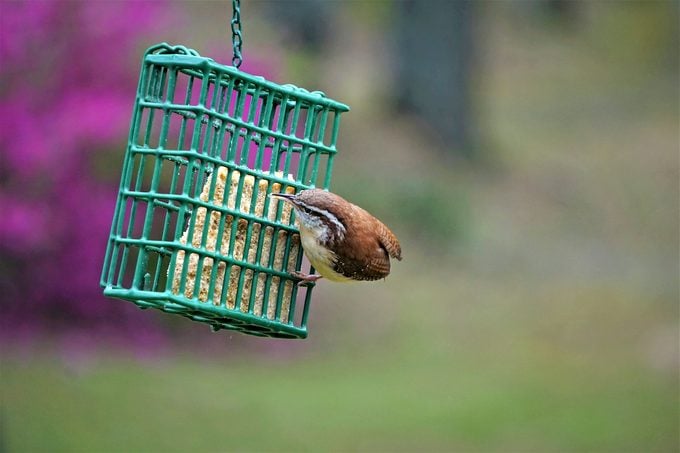
Their diet primarily consists of spiders, insects and some berries and seeds. They will come to suet feeders and may also eat peanuts, peanut butter, sunflower seeds, mealworms and other nuts. Wrens are also attracted to moving water, so add a dripper or fountain to your bird bath.
Don’t miss these delightful pictures of wren birds.
Bird Song
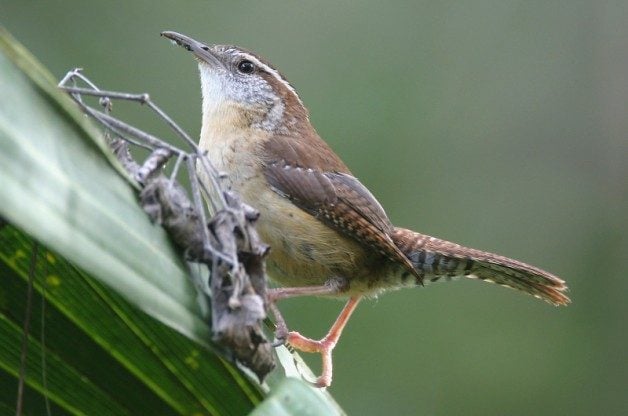
Listen to the Carolina wren’s call. Wrens are really boisterous singers and the portly Carolina wren is no exception. Their repetitive song is often heard as “tea-kettle, tea-kettle, tea-kettle,” or “Germany,” depending on which birder you ask. Male wrens cycle through a repertoire of various phrasing. The bird has been called “mocking wren” because it sometimes sounds like a catbird, kingfisher or certain other birds.
Bird songs provided by the Cornell Lab of Ornithology.
Meet the top songbirds in America.
Range Map and Habitat
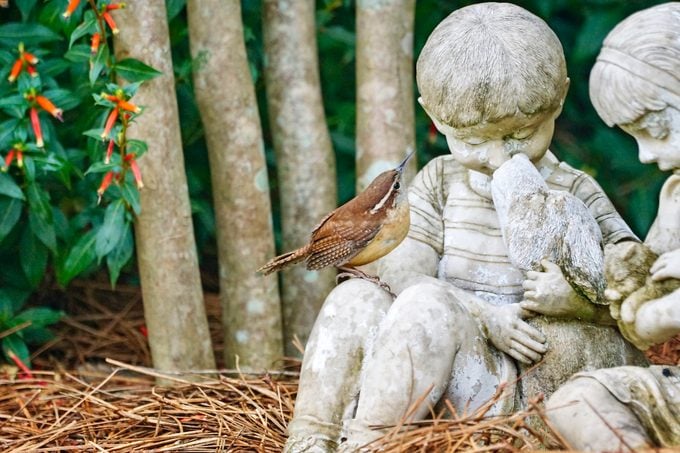
Look for these birds in brush and heavy undergrowth in wooded areas. Brush piles may help attract a breeding pair of Carolina wrens to your yard, as this species prefers a bushy habitat with lots of cover. In winter, they’re occasionally found as far north as southern Canada. Support populations on the northern end of their range by offering suet for birds during cold snaps.
Head southwest to see a cactus wren.
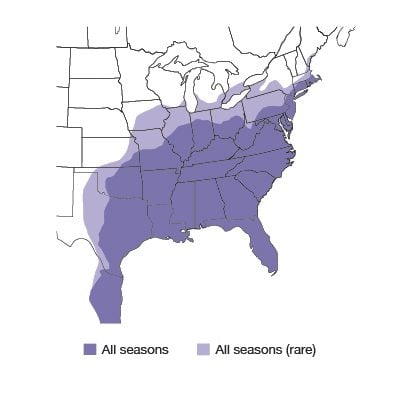
Range maps provided by Kaufman Field Guides, the official field guide of Birds & Blooms.
Next, learn when do house wrens return in spring?




















